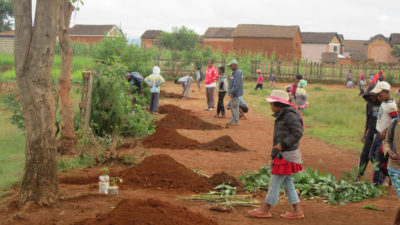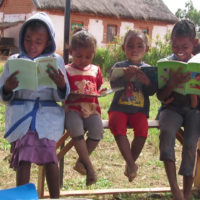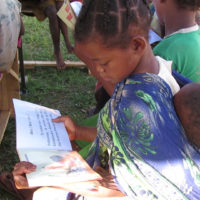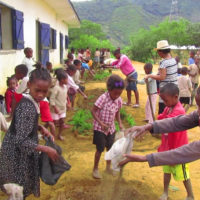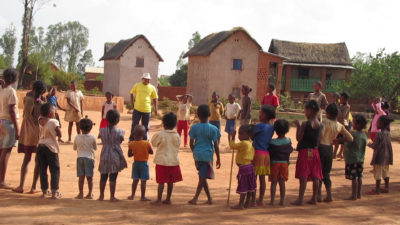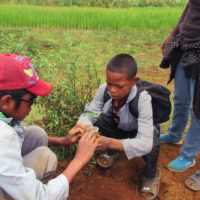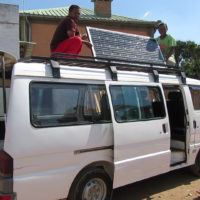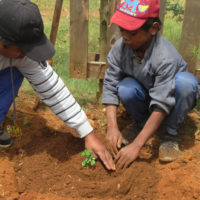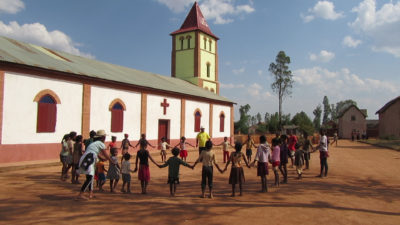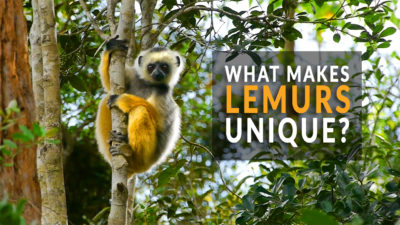Exploring undesignated tourist zones and having rich cultural exchanges led us to a very unexpected path in Madagascar. As a filmmaker, my original intent was to document the endemic biodiversity before it became more elusive.
The growing list of endangered species and the lemur cuteness factor drew me there. What I didn’t expect was the depth of love I would develop for the people. I was fixated on “saving the animals”, but had been looking at it all wrong. Fast forward years later, and I am now releasing the second video from Madagascar and am a couple years into facilitating the first mobile library in Madagascar.
People, Forests, and Animals are Interconnected
I realized quickly that you must consider the people genuinely when it comes to conservation. All is interconnected, and the health of one aspect is directly linked to the other. You can protect the forests, but if you cannot empower the people with sustainable opportunities than you’ve missed the mark. Malagasy families are trying to survive and thrive. I think that sometimes we forget that.
It’s easy to look at the face of a cute lemur, but when you look at the face of human pain and struggle, it’s harder.
Madagascar’s Animals and Humans are Both at Great Risk
Unfortunately, since 90% of Madagascar’s original forest cover has disappeared, most animal species as well as humans are at great risk. As pollinators, lemurs are crucial to the survival of Madagascar’s ecosystem. But, the truth is that to save lemurs, or any animal species for that matter, we must also empower the people. Humans & animals are uniquely connected and when we utilize inclusive solutions real homeostasis can take place.
This is the central point in the short documentary I’ve just released, ‘What Makes Lemurs Unique? + The Important Link to Madagascar.’ I hope to help others understand this delicate link, and want others to see what is possible.
“Talent is global, opportunity is not.” This is what inspired us to create the mobile library project. It’s a theme that couldn’t be more true in a place like Madagascar. The Malagasy are an industrious and resourceful people. There is even a common saying that goes, “The Chinese make it, but we fix it.”
Several areas of Madagascar are isolated and have limited or no access to books and education.
In fact, half of all school aged children have never been to primary school. In order to empower the forest we must empower the people. This understanding is key in our approach to effectively supporting sustainable development so that people and nature can thrive together.
The Inspiration for the Mobile Library Project
Have you ever heard of William Kamkwamba, the boy from Malawi who harnessed the wind?
His story has inspired us a lot in cultivating the Mobile Library Project. He and his family endured intense poverty and hunger until he found an unexpected solution. Using library books, at the age of 14, he built a windmill to power his family’s home from makeshift scraps. William was also able to improve water retrieval methods to bring barren areas of land back to life.
Research has shown that literacy and education is directly linked to a better quality of life. So, Mobile libraries can be utilized to empower and improve Malagasy lives through education & resources.
Opening Our Eyes in Madagascar
Rewinding back to our experience in Madagascar … when my husband and I were in Madagascar, we hired a tour guide named JJ. He was a self made 12 year veteran Malagasy tour guide. He’s the kind of guy that could tell you about any Madagascar bird, plant, tribe, or cultural norm with great detail. He would be the one to reveal a path to see the real Madagascar. Whether we played soccer with isolated villages, visited and gave supplies to schools, or had translated conversations with remote villagers — our eyes were open.
He is now the Madagascar Mobile Library Project’s grounds project operator. Together our families are the life blood of the mobile libraries.
Watch my short documentary to hear from JJ about what people start to see through our mobile library project.
Watch Documentary on FacebookIt is through JJ and his family that we are able to be genuine and relevant in our development of the project and to the Malagasy people. In cooperation with the NGO Zara Aina, JJ and his team are the local experts who run the mobile library on the ground. They are the local experts, so we facilitate them in carrying out what they think the Malagasy people need most.
Finding Locally Relevant Solutions
Together, we find locally relevant solutions, often built on hybrid models that mix local traditions with modern best practices. We focus on education, seed sharing/re-greening and community guidance. This multifaceted approach provides opportunities to improve literacy, community health, sustainable livelihoods and environmental conservation.
Partnering with NGOs and Change Makers
The mobile library project also partners with existing NGOs and change makers to support the establishment of libraries as engines of sustainable development and social change. The mobile library project provides workshops, discussion groups, literacy classes and games around learning both to adults and kids. We have also added a seed and tree sharing system that benefits schools and families.
Learn More
I will be releasing more short documentaries in this series that detail various aspects about the project and Madagascar, like: “How Our Mobile Library Works In Madagascar” & “Why Are The Animals & Plants In Madagascar Unique.” So, please stay tuned!

